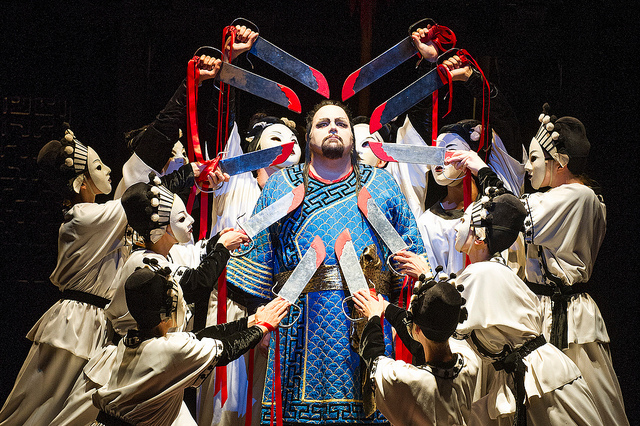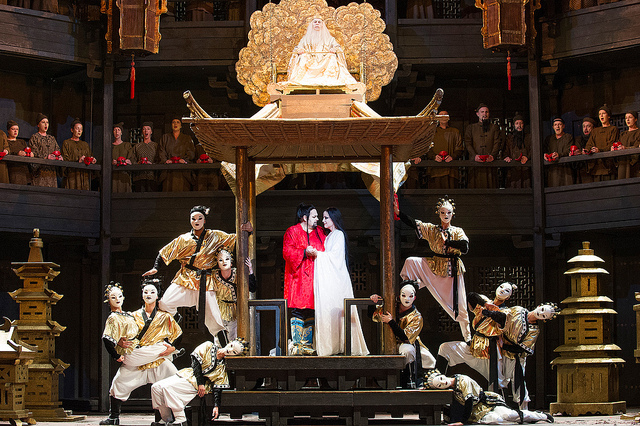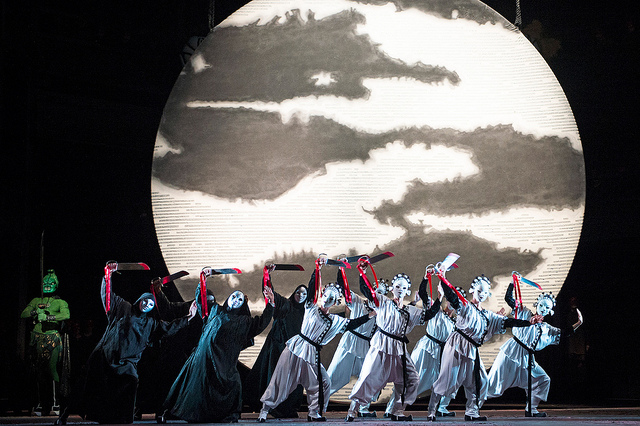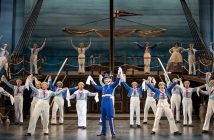Puccini’s final work kicks off the opera season at the Royal Opera House, which has called in the big guns for the occasion, taking us back to ancient China to witness the cruel games of Turandot.

Lise Lindstrom takes on the title role of the embittered princess who will only marry the man who can solve her three riddles; unfortunately for any suitors, failure to do so also means death, and our scene is set at the execution of one such poor fellow. Making her Royal Opera debut, the American soprano is certainly the right sort of heavyweight singer to take on this part. Her tone is somewhat harsh but this translates well into the icy Turandot, who is by no means a likeable character. Lindstrom has one hell of a pair of lungs, and her acting ability shows why she is in demand worldwide; she holds herself with inimitable and terrifying poise as the stubborn princess who tortures the foolish men that cross her path.
One might wonder why they keep trying but, as we find with Calaf, it is Turandot’s beauty that bewitches men into vying for her at such cost. Calaf is the son of an exiled king and, as he witnesses Turandot’s brutality, so he is also reunited with his elderly father, who has been looked after by the noble slave girl, Liù. Despite the relief of this meeting, Calaf offers himself up to the princess, ignoring the advice of everyone around him. Sung by the divine Eri Nakamura, Liù is the tragic heroine of this tale, enduring torture and ultimately killing herself for love of the besotted, foolhardy Calaf. Pure, sensitive and yet startlingly effective, Nakamura’s performance quite rightly earned the largest applause of the night.

Calaf is taken on by Marco Berti who has a bold job in hand, not least in delivering what is perhaps the most famous aria in the male operatic repertoire. Despite a slightly strained tone throughout, his ‘Nessun Dorma’ was impressively controlled. Berti has a tendency towards an abrasive, forced Pavarotti-esque sound, which caused occasional breaks in his voice, but he made a stunning match for Lindstrom; a very loud, but impressive pairing.
The sweeping scenery of Puccini’s score is masterfully maneuvered by Henrik Nánási, the young Hungarian conductor, directing the Orchestra of the Royal Opera House with sumptuous musicality and finesse. At times, the drama and richness of the composition veer towards film music territory (it’s sometimes even Bond-like) but that is part of the joy of this work. The one major sadness is that Puccini died before being able to finish Turandot and so the ending – completed by Franco Alfano in 1926 – doesn’t quite provide the bang that you expect from a big Puccini opera.

Nonetheless, the whole thing is wonderfully conveyed, not just through the dazzling musical performances but the elaborate production, which has been impressing audiences for the last 29 years. Originally designed to fit Wembley Arena, it is no surprise that Andrei Serban’s vision is still revived – the set is imposing, ominous and exciting, with large props (that look fiendish to operate) and colourful, expressive costumes. This is a well-oiled production with which the Royal Opera clearly feels safe, yet I do wonder whether the time for a refresher might have come, in order to give this Turandot its edge.
Come what may, Turandot will not fail to impress, and singers like Lindstrom and Nakamura – however different from one another – simply must be heard. Covent Garden is offering a good dollop of drama and colour now that these drizzly, winterish evenings are drawing in.
Turandot runs at the Royal Opera House until 10th March 2014. For more information and tickets, visit the website.




